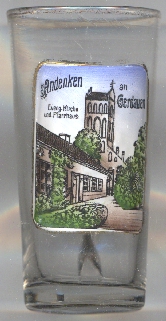

|
| РОССИЯ ROSSIJA | RUSSIA |
| Калининградская область / Kaliningradskaja oblast' | Kaliningrad province |
| Правдинский район / Pravdinskij rajon | Pravdinsk district |
 Železnodorožnyj (Russian: Железнодорожный, literally
'railway (town)'; until 1945 German: Gerdauen, Polish: Gierdawy, Lithuanian: Gidarva) is an urban locality (an urban-type
settlement) in the Pravdinsky District of Kaliningrad Oblast, Russia, about 65 km southeast of the regional capital, Kaliningrad.
As of 2017, it has a population of about 2,700.
Železnodorožnyj (Russian: Железнодорожный, literally
'railway (town)'; until 1945 German: Gerdauen, Polish: Gierdawy, Lithuanian: Gidarva) is an urban locality (an urban-type
settlement) in the Pravdinsky District of Kaliningrad Oblast, Russia, about 65 km southeast of the regional capital, Kaliningrad.
As of 2017, it has a population of about 2,700.
An old Prussian fortification existed in this area possibly since the 9th century. German settlers arrived sometime in the late 13th or early 14th century. The settlers came in connection with the construction of a castle of the Teutonic Order, which is mentioned as completed in written sources from 1315 and 1325. A settlement was formed around the castle, and was attacked by Lithuanians in 1336, 1347 and 1366, but prospered and in 1398 received the status of a town according to Kulm (Chełmno) law. A town wall was erected in 1406. In 1440, the town joined the anti-Teutonic Prussian Confederation, upon the request of which the region and town was incorporated into to the Kingdom of Poland in 1454. In 1871 it was connected to the Thorn–Insterburg (Toruń–Černjahovsk) railway line, a railway line to Königsberg (Kaliningrad) was opened in 1898, and a narrow-gauge railway began operating in 1917. From 1871, the town was part of Germany, within which it was located in the province of East Prussia. Gerdauen was heavily damaged during fighting in World War I but was later rebuilt. During World War II, in 1944–1945, it was the location of Außenarbeitslager Gerdauen, a subcamp of the Stutthof concentration camp, in which the Germans imprisoned around 900 Jewish women and 100 Jewish men as forced labour. Following Germany's defeat in the war, the town initially passed to Poland, within which it was a county seat. It was then known under its historic Polish name Gierdawy. However, the town eventually was annexed by the Soviet Union in 1945. The German population was expelled and replaced with mostly Russian settlers, with the Soviet portion of the former province of East Prussia being organized into Kaliningrad Oblast. In 1946 the name was changed to its current name Железнодорожный (Železnodorožnyj).
The former Protestant  Parish church [background] was originally built as a fortified church donated in 1260.
The northern wall of the church was later integrated into the city wall, and the fortified tower was reinforced with buttresses. The ruins of the church,
which can still be seen today, date from the first half of the 15th century. After World War II, the church was used at forst as a cultural
centre but later it was left to decay and vandalism. In the 1970s the roof and part of the east gable collapsed, in 1988 the gable over the south vestibule
also collapsed. After 1992, urgently needed security and restoration work was carried out — also with help from
Germany — since 1998 the tower has been secured for conservation purposes.
Parish church [background] was originally built as a fortified church donated in 1260.
The northern wall of the church was later integrated into the city wall, and the fortified tower was reinforced with buttresses. The ruins of the church,
which can still be seen today, date from the first half of the 15th century. After World War II, the church was used at forst as a cultural
centre but later it was left to decay and vandalism. In the 1970s the roof and part of the east gable collapsed, in 1988 the gable over the south vestibule
also collapsed. After 1992, urgently needed security and restoration work was carried out — also with help from
Germany — since 1998 the tower has been secured for conservation purposes.
[https://de.wikipedia.org/wiki/Schelesnodoroschny_(Kaliningrad), https://en.wikipedia.org/wiki/Zheleznodorozhny,_Kaliningrad_Oblast]
![[scale]](lineal.jpg)